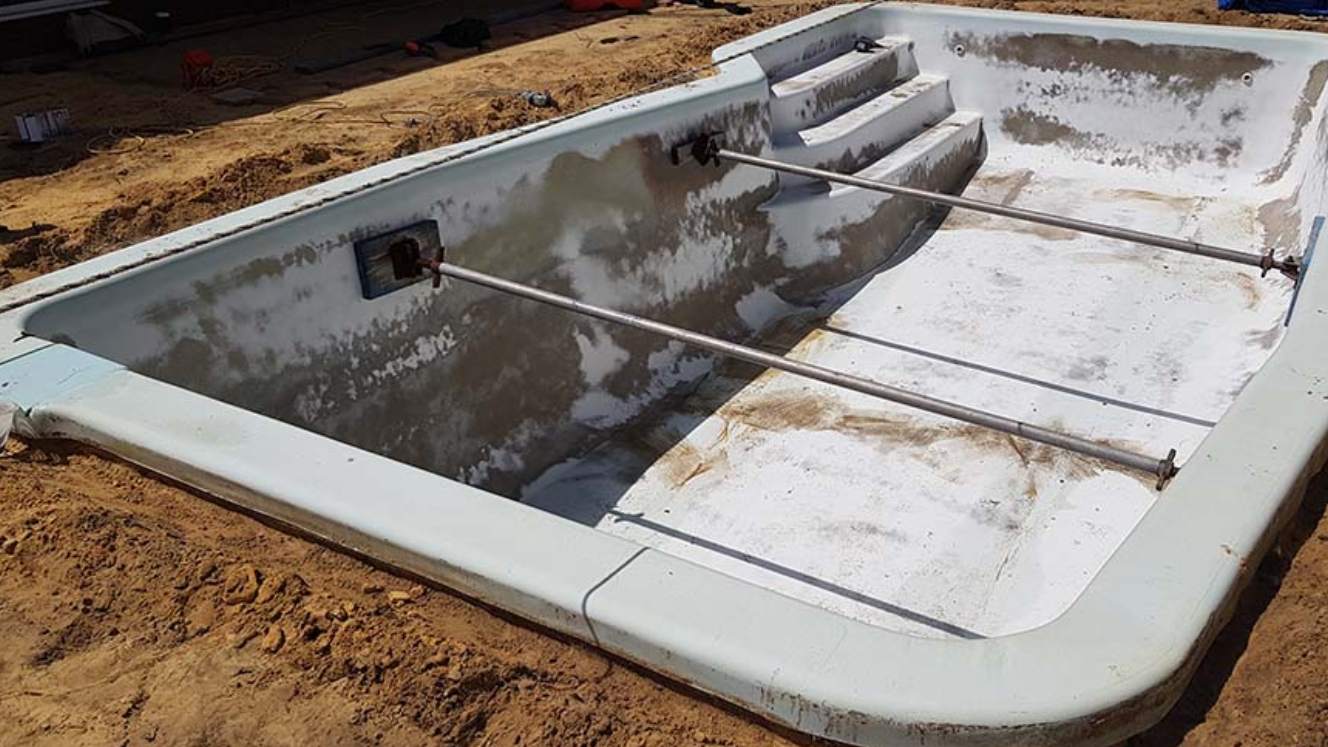
Fibreglass pools are a popular choice for many homeowners due to their durability, low maintenance, and aesthetic appeal. However, over time, even the best-maintained fibreglass pools can begin to show signs of wear and tear, leading to the need for resurfacing. It’s important for homeowners to be able to recognise the warning signs that their pool needs resurfacing so that they can take action before the damage becomes too severe.
What is Fiberglass Pool Resurfacing?
Fibreglass pool resurfacing is the process of removing the top layer of the pool’s surface and replacing it with a new layer of fibreglass. Unlike other types of pool resurfacing, which typically involve plaster or tile, fibreglass resurfacing offers a more durable and long-lasting solution. Fibreglass resurfacing is also known for its flexibility in design, allowing homeowners to customise the look of their pool with a variety of colour and finish options.
Signs Your Fibreglass Pool Needs Resurfacing
Fibreglass pools are a popular choice for homeowners due to their durability and longevity. However, even the strongest materials can suffer wear and tear over time, resulting in cracks, stains, and rough textures. If you’re a pool owner, it’s important to recognise the warning signs that your fibreglass pool needs resurfacing. These signs include:
- Cracks and Chips
- Stains and Discoloration
- Rough Texture
- Water Loss
Cracks and Chips
Fibreglass pools are known for their durability and longevity, but over time, they can develop cracks and chips. These can be caused by several factors, including shifting soil, freesing temperatures, and wear and tear. If you notice cracks or chips on the surface of your fibreglass pool, it’s important to address them as soon as possible. Ignoring these warning signs can lead to further damage and more costly repairs down the line.
One way to address cracks and chips is through fibreglass pool resurfacing. During the resurfacing process, the damaged area is sanded down and patched with fibreglass resin. This helps to restore the integrity of the pool and prevent further damage. Fibreglass resurfacing can also improve the appearance of the pool, making it look like new again.
Stains and Discoloration
Stains and discoloration on the surface of a fibreglass pool can be caused by a number of factors, including algae growth, chemical imbalances, and exposure to sunlight. While stains and discoloration may seem like minor issues, they can be signs that the surface of the pool has been compromised and needs to be resurfaced.
Resurfacing a fibreglass pool can help to remove stains and discoloration and restore the pool’s appearance. In some cases, resurfacing can also help to prevent future staining, by creating a smoother and more resistant surface.
Rough Texture
A rough texture on the surface of a fibreglass pool can be a sign that the pool needs resurfacing. This roughness can be caused by several factors, including wear and tear, exposure to harsh chemicals, and damage from debris.
Resurfacing a fibreglass pool can help to smooth out rough textures and restore the pool’s original finish. This can also make the pool safer to use, by reducing the risk of scrapes and cuts from a rough surface.
Water Loss
Water loss can be a sign that a fibreglass pool needs resurfacing. This is because cracks and chips in the surface of the pool can allow water to escape, leading to a drop in water level. If you notice that your pool’s water level is consistently dropping, it’s important to investigate the cause and address it as soon as possible.
Resurfacing a fibreglass pool can help to address issues with water loss, by sealing up any cracks or chips in the surface of the pool. This can help to prevent further water loss and ensure that the pool is safe and enjoyable to use.
As a pool owner, it’s essential to recognise the warning signs that your fibreglass pool needs resurfacing to ensure that it stays safe, attractive, and long-lasting. By consulting with the experts at Pools 101 and addressing these warning signs through fibreglass pool resurfacing, you can avoid further damage and guarantee that your pool stays in excellent condition for many years to come.
When to Resurface Your Fibreglass Pool
Keeping track of when to resurface your fibreglass pool can help to maintain its integrity and prolong its lifespan. Here are some factors to consider:
- Frequency: Fibreglass pools are durable and can last for decades with proper care, but eventually, the surface will need to be resurfaced. The average lifespan of a fibreglass pool surface is around 15-20 years.
- Factors: The frequency of resurfacing can be influenced by factors such as the climate, the frequency of use, the type of chemicals used, and the overall maintenance of the pool.
- Warning signs: Signs that your fibreglass pool needs resurfacing include cracks, chips, stains, discoloration, rough textures, and water loss. If you notice any of these signs, it’s important to address them as soon as possible to prevent further damage.
By keeping these factors in mind and being proactive about identifying warning signs, you can ensure that your fibreglass pool stays in top condition for years to come.
It’s crucial to pay attention to warning signs that your fibreglass pool needs resurfacing to maintain the pool’s safety, appearance, and longevity. By addressing these warning signs through fibreglass pool resurfacing, you can prevent further damage and ensure that your pool remains in top condition. Don’t ignore these signs as they can lead to bigger problems and expenses down the road.
